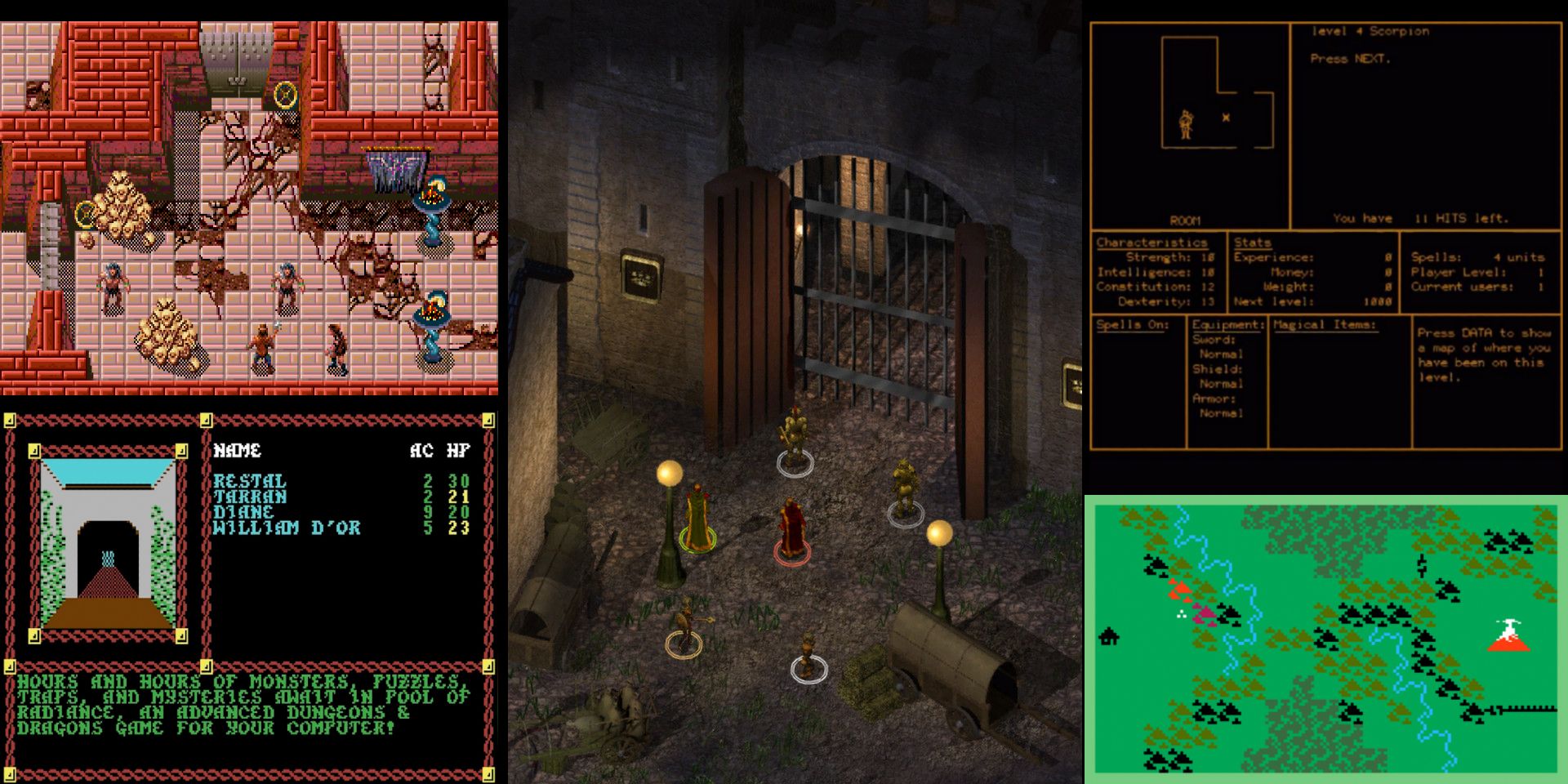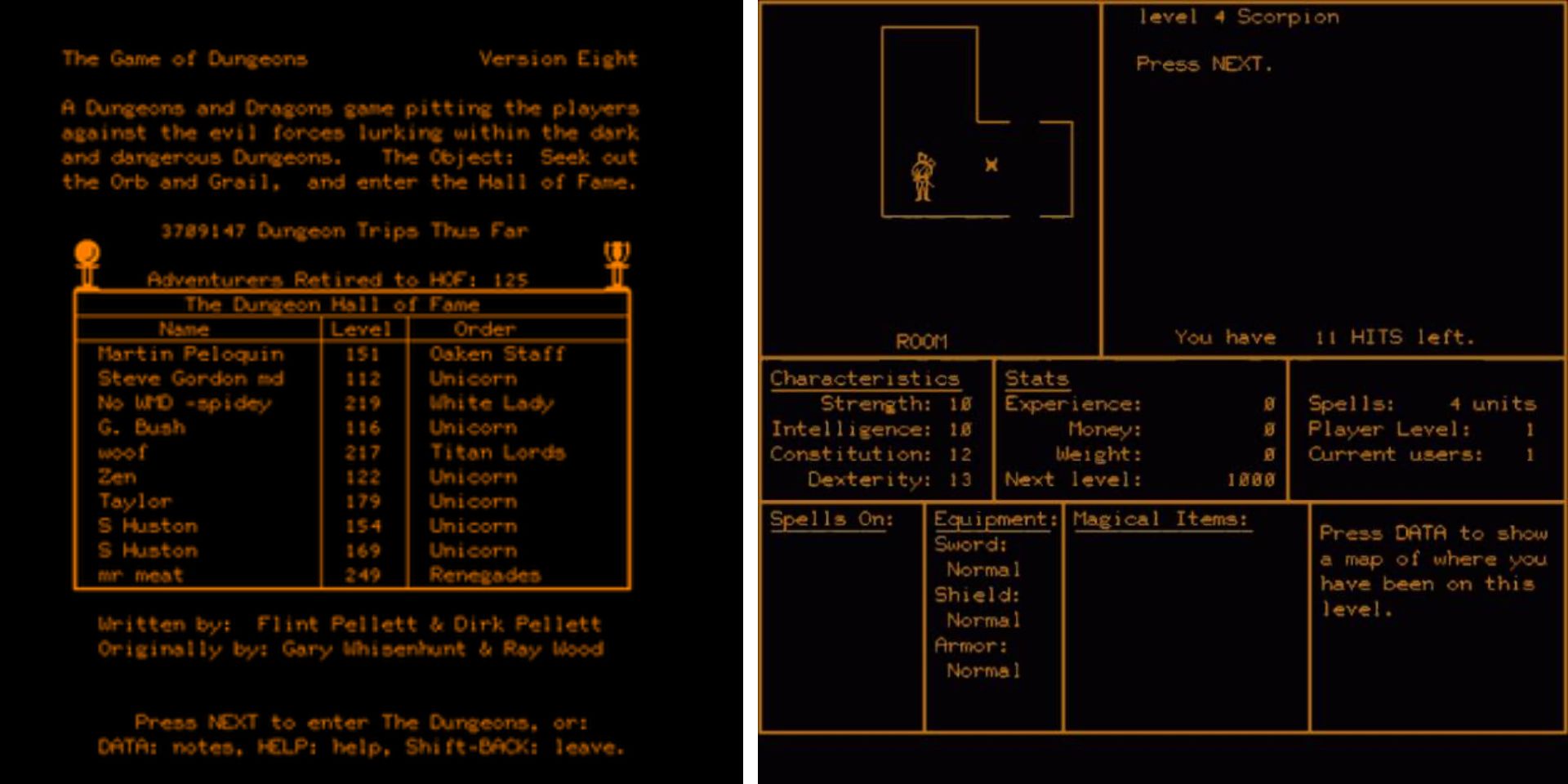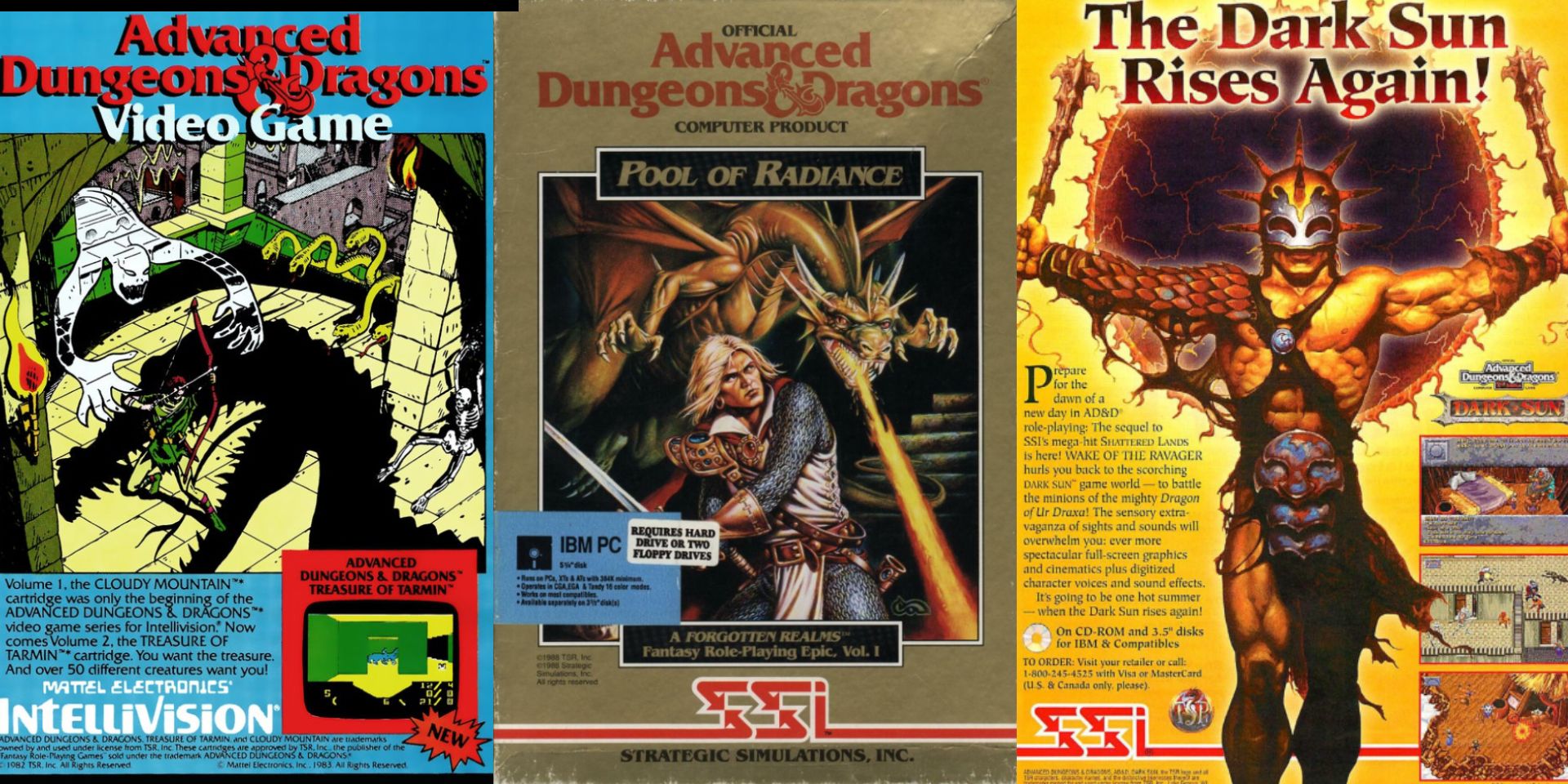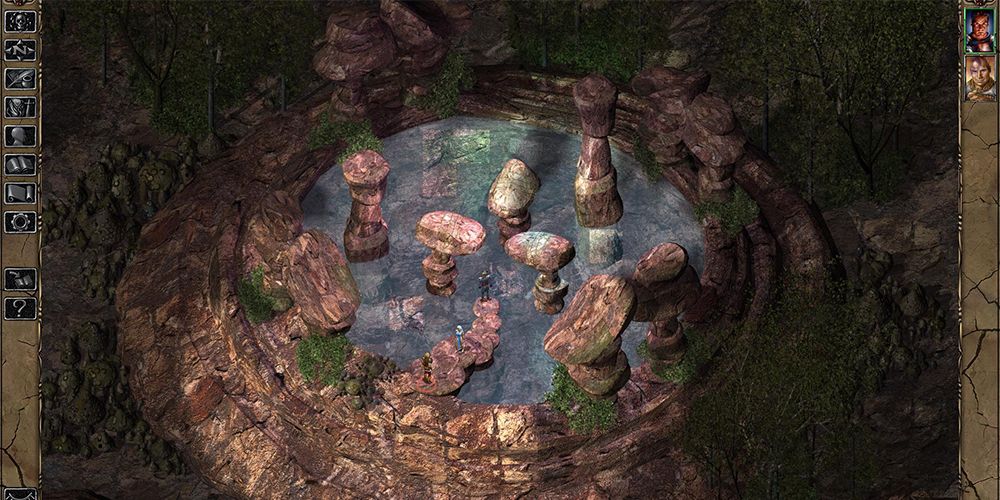As the world’s first tabletop fantasy roleplaying games, Dungeons & Dragons has had an immeasurable influence on the design principles, gameplay, and progression mechanics of video games and computer/console RPGs the world over. Generally, if a game has character levels, experience points, turn-based combat, or fantasy archetypes like the Cleric or White Mage, then it’s a descendent of D&D. Within this vast library of video games inspired by D&D resides a smaller, but still impressive collection of official Dungeons & Dragons video game RPGs; aside from famous contemporary titles such as Baldur’s Gate and Neverwinter Nights, there are more obscure games such as Pools of Radiance or dnd that were very excellent for their time and transformed how the gameplay and graphics of fantasy computer RPGs are designed.
The first generations of video game consoles and home computers became available for purchase around the same time as the earliest edition of Dungeons & Dragons. Many early programmers and video game designers also happened to be huge fans of early D&D, and used the rules and premise of the first RPG as inspiration for the templates of their own genre-defining games. The 1976 text adventure game Colossal Cave Adventure, one of the earliest works of interactive fiction, replicated the perilous exploration of maze-like dungeons so common to sessions of old-school D&D, while Richard Garriott’s D&D influenced 1979 game Akalabeth: World of Doom kickstarted the entire Ultima franchise of computer RPGs. By the 1980s, there were a plethora of video games with D&D in their DNA - the Wizardry series, Rogue and other Roguelike games, console RPGs such as Dragon Quest and Final Fantasy, etc.
Amid all these early D&D inspired video games, there were titles on console and computer that were official adaptations of the Dungeons & Dragons tabletop game. With the official blessing of D&D’s parent company Tactical Studies Rules, Incorporated, game developers published a surprising number of licensed D&D video games over the course of the 1980s, 1990s, and all the way up to modern day. Not all these video games are on the level of D&D cRPG classics like Planescape: Torment, but they did play an important role in the growth and updating of D&D and computer/console RPGs in general.
1970s - The D&D Adaptation Called dnd That Started It All
In 1974, back in the pre-edition days of tabletop Dungeons & Dragons, a team of computer students at Southern Illinois University used the PLATO cross-college computer mainframe to develop a game called dnd, or “The Game of Dungeons.” Though not an official adaptation of D&D, the creators of dnd borrowed numerous gameplay features from original D&D, home-brewed some rule changes to better reflect the single-player game experience, and eventually created a surprisingly sophisticated RPG that pioneered a lot of the features intrinsic to modern RPG video games (according to an RPG Fanatic interview with dnd's creators - not the creators of Dungeons & Dragons - now hosted by the Internet Archive) - monster-filled mazes with multiple levels, grinding for gold, items, weapons, and magic, enemies with elemental weaknesses/strengths, powerful boss enemies, and so on.
1980s – D&D Intellivision Games & Gold Box Computer RPGs
In 1982, video game developers working on the Intellivision video game console partnered with TSR, Inc. to create the first official video game adaptation of the Dungeons & Dragons RPG called Advanced Dungeons & Dragons: Cloudy Mountain. The gameplay of this action/exploration title alternated between open-world exploration of an Overworld map and dungeon-crawling segments where a player icon with a bow would explore a maze filled with monsters, items, spare arrows, and fragments of a long-lost crown. Just a year later, another Advanced Dungeons & Dragons Intellivision (the console line currently in legal trouble) adaptation called Treasure of Tarmin was released, which switched the gameplay to a 1st-person dungeon-crawling format and introduced gameplay features such as collections new armor, weapons, foodstuffs, and magic items along with the turn-based combat and level-up mechanics of tabletop D&D.
Around the mid-1980s, when computer RPG franchise such as Wizardry, Ultima, and The Bard's Tale were taking the gaming scene by storm, TSR gave developers at Strategic Simulations, Inc. a license to develop their own computer RPGs based off the system and settings of tabletop D&D. The premier SSI game, Pools of Radiance, was one of the first computer RPGs to really translate Dungeons & Dragons into a virtual format, letting players create parties of fantasy heroes with different race and class combinations, then send those heroes on adventures to slay monsters, collect treasure, talk with NPCs, level up, and revitalize the ailing city of Phlan in the Forgotten Realms. The success of Pools of Radiance inspired a whole series of Gold Box computer RPGs for the Apple II and Commodore 64, each of which gave players the option to port character data from previous games into the new one. Dark Queen of Krynn, set in the Dragonlance D&D universe, was a particularly popular entry.
Near the end of SSI's collaboration with TSR, developers at the company came out with a Dungeons & Dragons RPG adaptation built around a new game engine, set in the apocalyptic D&D setting called Dark Sun. Though clunky by modern standards, the top-down world-exploration, inventory management, and blend of real-time and turn-based tactical game mechanics established as precedent for a certain future isometric RPG series made by BioWare.
1990s - Baldur’s Gate & Modern Isometric D&D RPGs
Pillars of Eternity, Torment: Tides of Numenera, Pathfinder: Kingmaker, Disco Elysium - there are no shortage of modern RPGs that attempt to recreate the look and feel of the iconic, genre defining D&D games made by BioWare and Black Isle Studios in the 1990s and early 2000s. The common features shared by all the best isometric computer RPGs include the following - an isometric pseudo-3D perspective, real-time combat with the option to pause the game and issue orders to party members, spells and abilities with unique tactical applications, role-play segments built around multiple-choice dialogue trees, and recruit-able NPC adventuring party members with full-formed personalities, agendas, and side-quests. This blend of party-focused dungeon-crawling RPG and RTS gameplay made the original Baldur's Gate a huge hit among D&D fans and video game players alike, and inspired a whole series of other D&D computer RPGs built using BioWare and Black Isle Studios' in-house Infinity Engine - Baldur's Gate 2, the Icewind Dale series, and the infamously weird Planescape: Torment, acclaimed by many as having one of the best computer game stories ever written.
These Infinity Engine D&D games, along with all the D&D adaptations before it, wound up inspiring a whole new generations of 3D D&D computer RPGs - BioWare's own Neverwinter Nights series, the Dungeons & Dragons Online MMO, and the Dark Alliance action games. Baldur's Gate 3, under development by Larian Studios and built off the fifth edition rules for Dungeons & Dragons, has given players an unprecedented amount of freedom when it comes to overcoming challenges, solving problems creatively, and making meaningful decisions.
Source: RPG Fanatic (via the Internet Archive)




